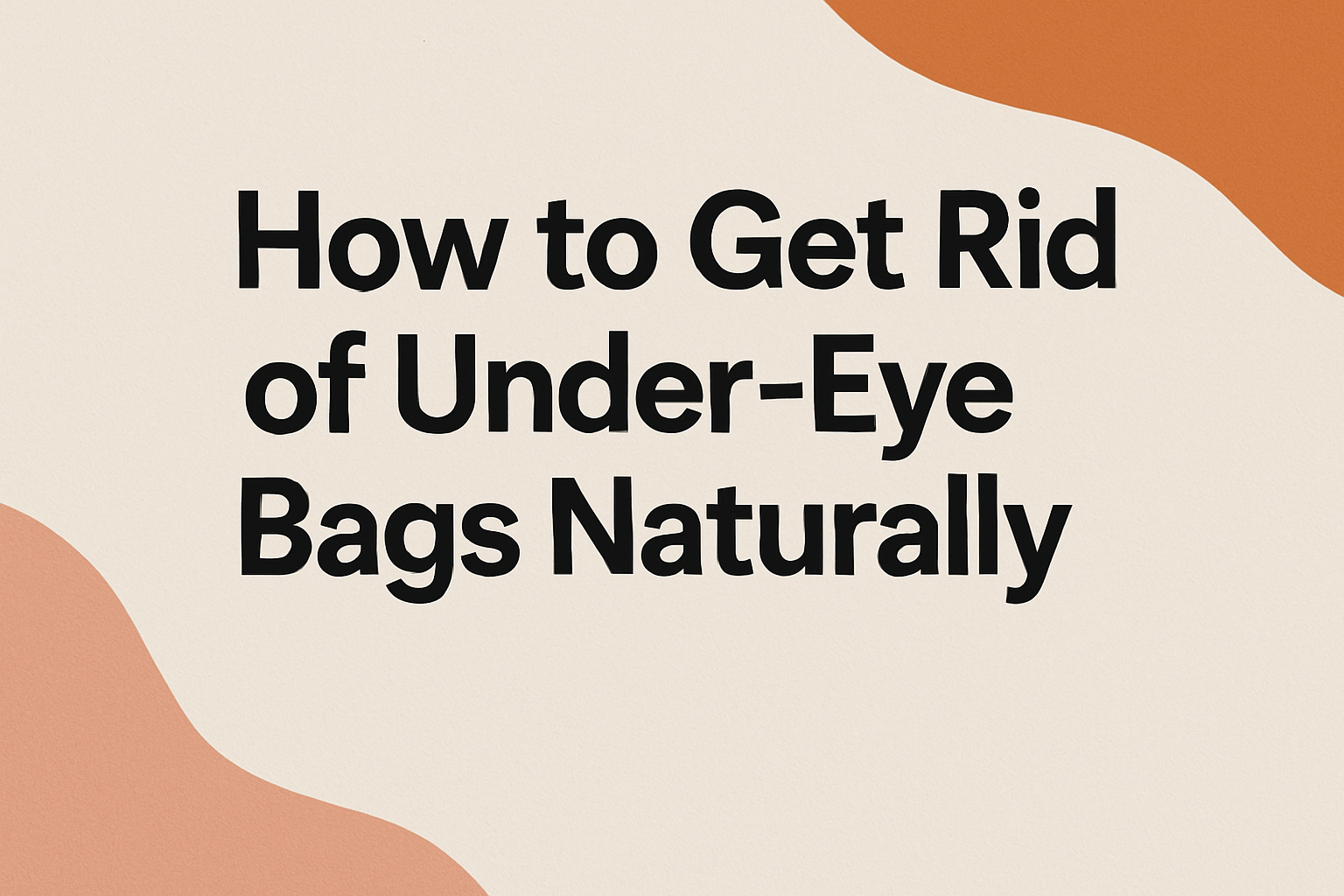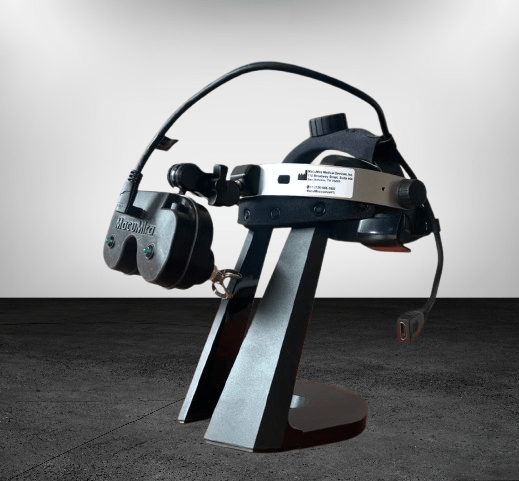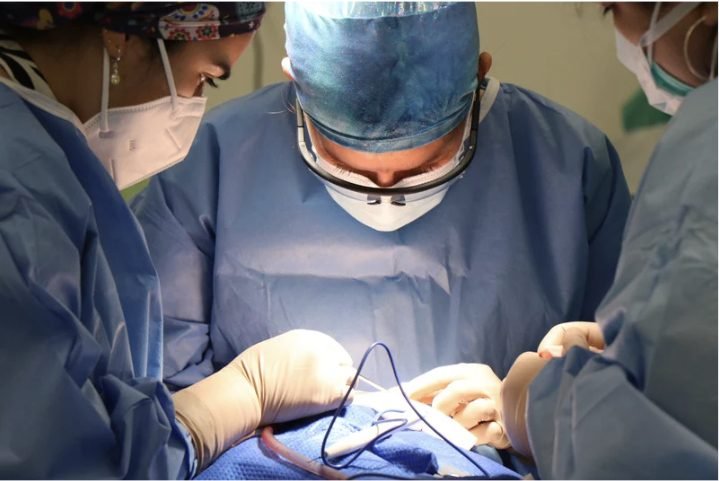How to Get Rid of Under-Eye Bags Naturally
If you’re wondering how to get rid of under-eye bags naturally, you’re not alone. This guide covers causes, home remedies, and medical options
👁 What Are Under-Eye Bags?
Under-eye bags — also known as periorbital puffiness — are a common cosmetic concern. They appear as mild swelling or puffiness beneath the eyes and are especially common as we get older.
While they’re usually harmless, they can affect your self-esteem, make you look tired, and even cause discomfort if related to allergies or inflammation.
This blog explores the real causes, effective home remedies, lifestyle changes, and treatment options — with science-backed advice and practical tips.
🧠 The Anatomy Behind Under-Eye Bags
To understand how to reduce them, let’s first understand why under-eye bags appear.
What’s Happening Under Your Skin?
Beneath your eyes lies a structure of skin, connective tissue, and fat pads. With age:
- Skin loses elasticity and thins out
- Supporting tissue weakens
- Fat, which normally sits deeper in the eye socket, pushes forward
- Fluid may accumulate, causing puffiness and shadows
These changes lead to that classic “baggy” look — sagging skin or puffiness just below the lower eyelid.
🧂 1. Reduce Salt Intake: A Simple Lifestyle Fix
Excess sodium causes the body to retain water. This fluid retention can lead to swelling in various parts of the body, including the delicate tissue beneath your eyes.
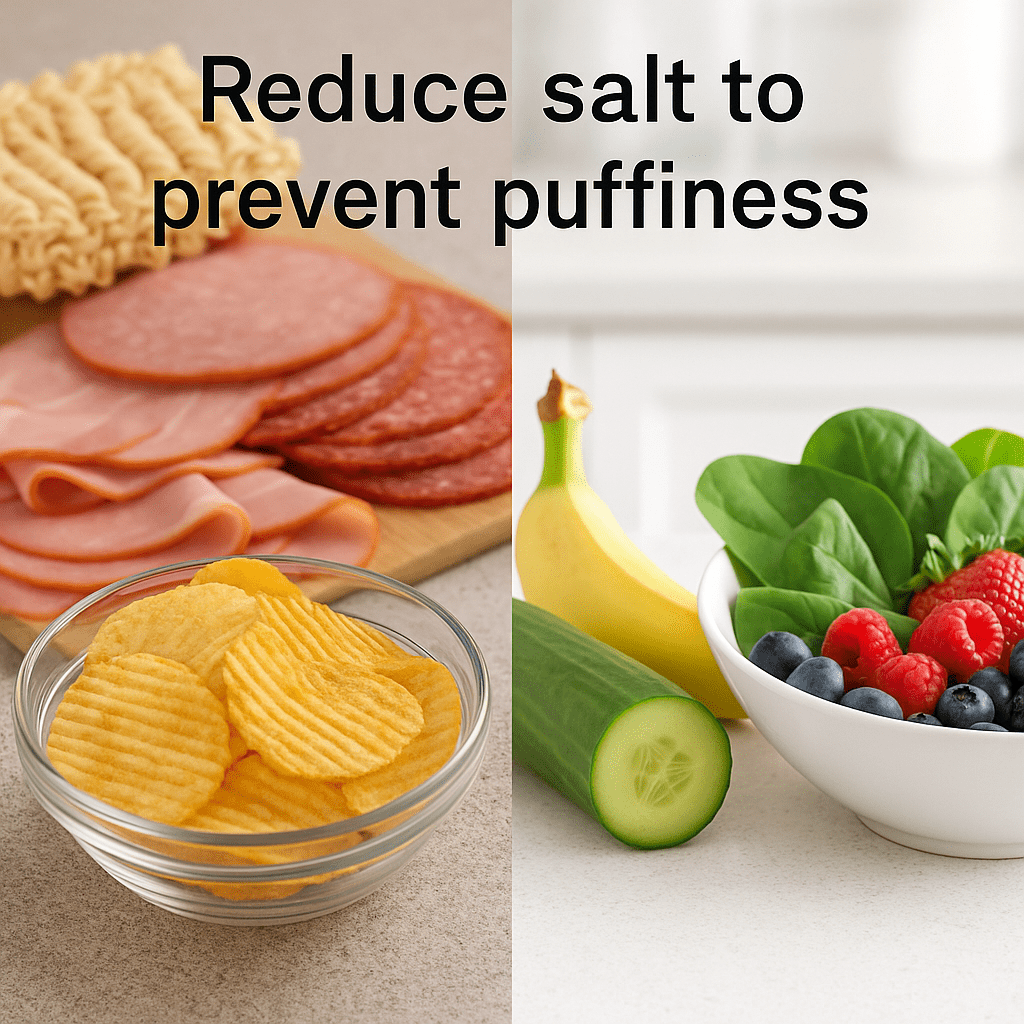
Foods to Limit:
- Fast food
- Instant noodles and canned soups
- Deli meats and salty snacks
- Pickled or preserved foods
Try This Instead:
- Drink plenty of water
- Eat potassium-rich foods like bananas, avocados, and leafy greens (they help flush excess sodium)
- Cook more meals at home with fresh ingredients
💡 Tip: Avoid eating salty foods at night — morning puffiness tends to be worse if you eat sodium-heavy meals before bed.
❄️ 2. Cold Therapy: Simple Yet Effective
Cold compresses are one of the easiest ways to temporarily reduce puffiness by constricting blood vessels and reducing inflammation.
Cold Compress Ideas:
- Chilled cucumber slices
- Cold metal spoon
- Frozen tea bags (especially green or chamomile)
- Gel eye masks (keep one in your fridge)
- Ice cubes wrapped in a cloth
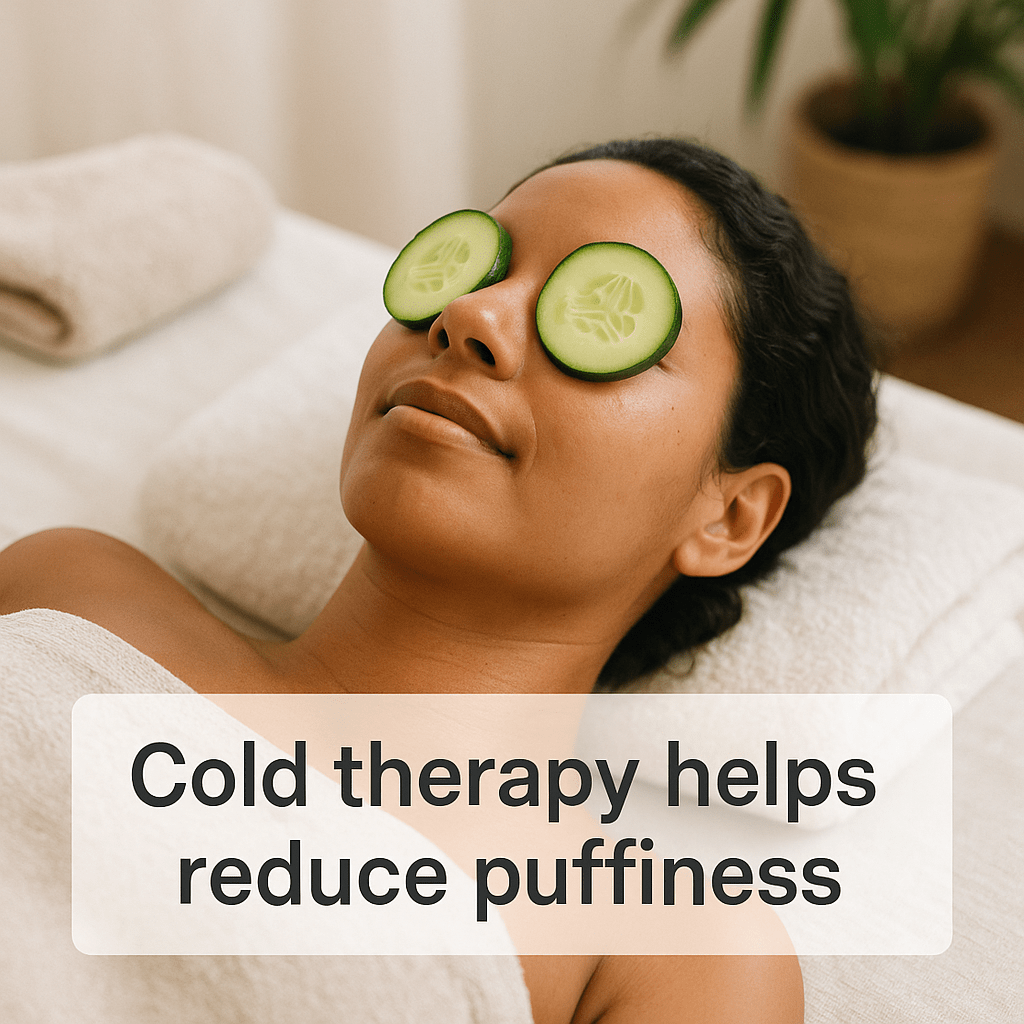
Use these in the morning or anytime your eyes feel puffy. Just 5–10 minutes can make a visible difference.
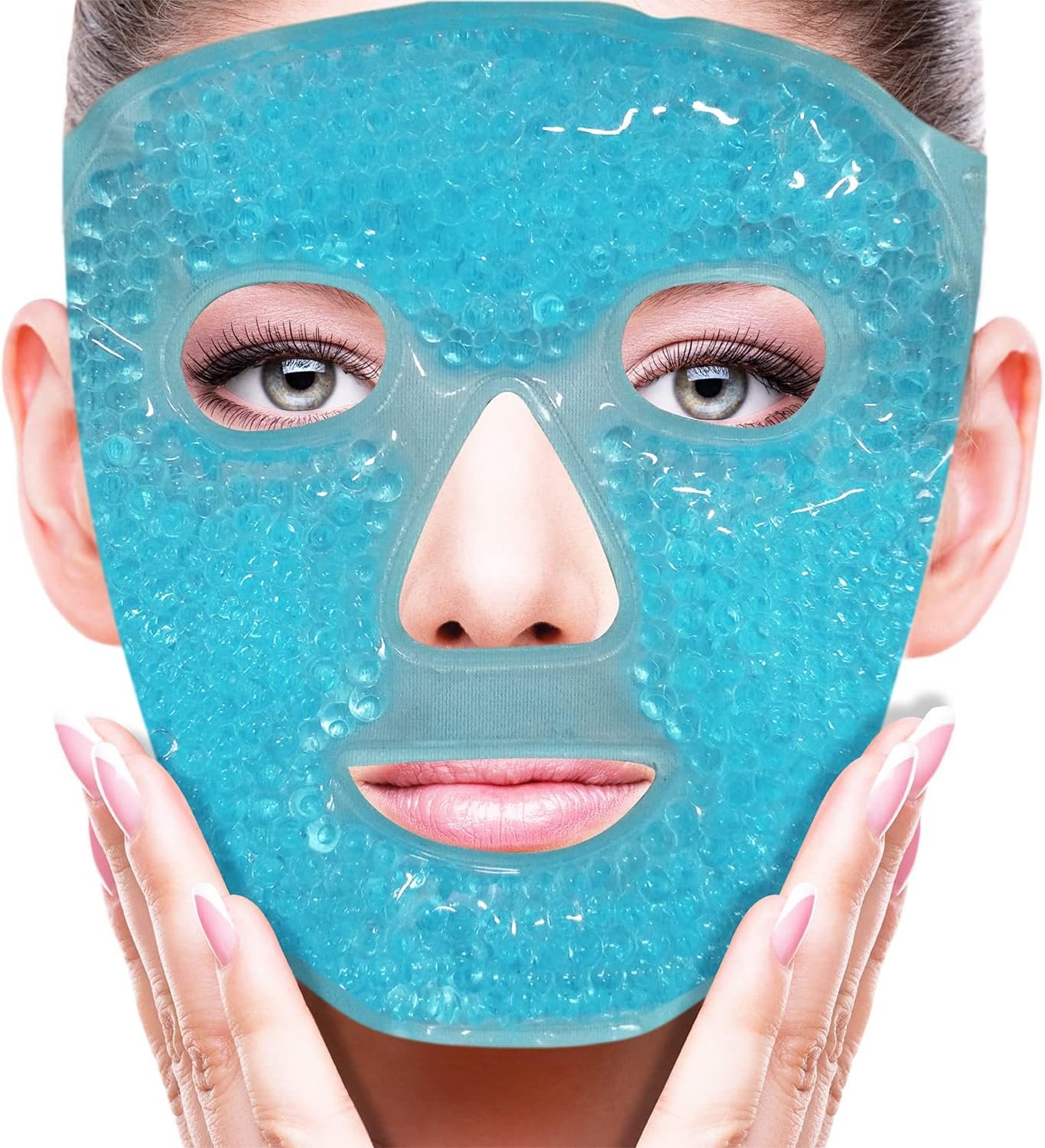
simply store the mask in the freezer at -18℃ and then use it
🌸 3. Watch Out for Allergies
Allergies can play a major role in chronic puffiness. When exposed to allergens (like pollen, dust, or pet dander), your body releases histamine, leading to:
- Swelling
- Itchiness
- Redness
- Watery eyes
What You Can Do:
- Avoid rubbing your eyes — it worsens swelling and inflammation.
- Use antihistamine eye drops (available over-the-counter).
- Consider oral antihistamines, but be aware: they may dry out your eyes.
- Try air purifiers and hypoallergenic pillow covers if you have indoor allergies.
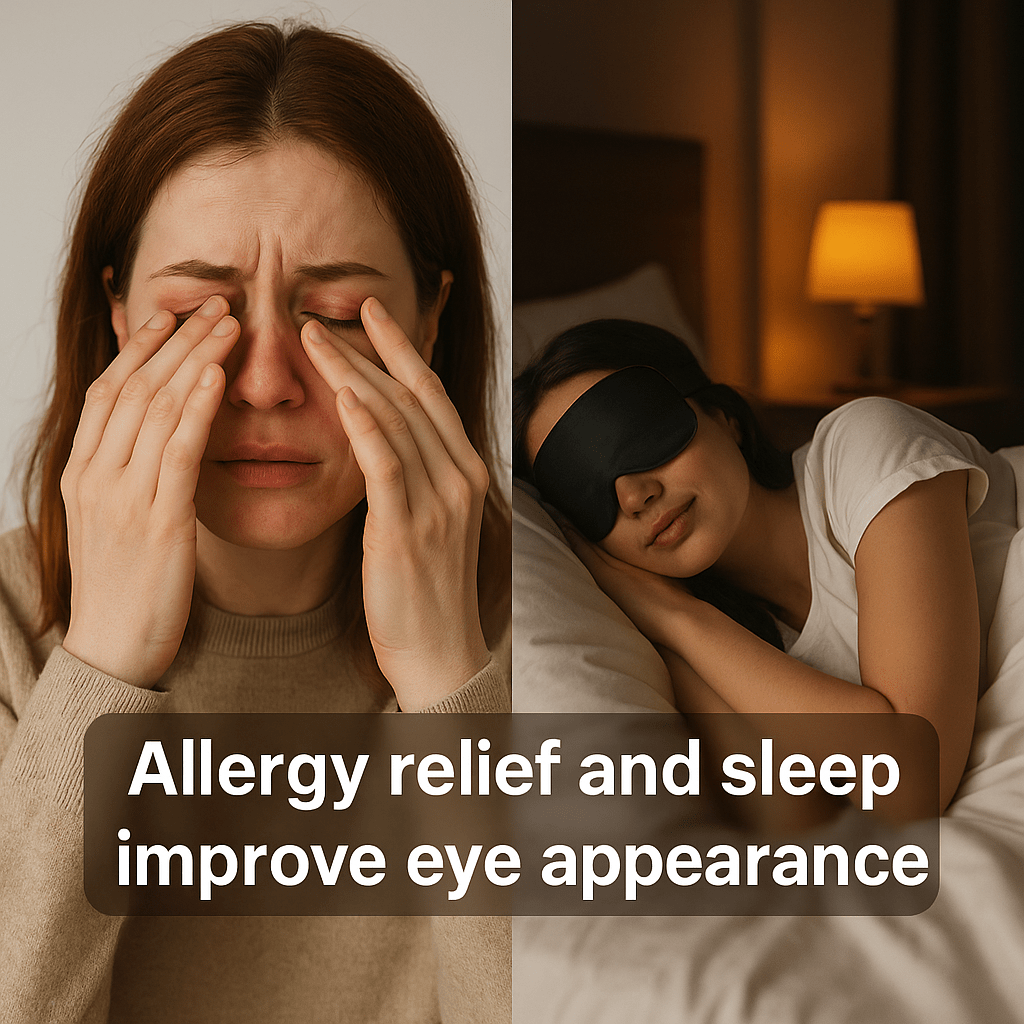
👃 Pro Tip: If nasal congestion is contributing to puffy eyes, a saline nasal spray may help relieve sinus pressure and reduce eye puffiness.
🧴 4. Eye Creams: Myths, Risks, and the Rare Exceptions
The beauty industry offers countless products promising to reduce under-eye bags. While some provide temporary improvements, most don’t solve the root cause — and a few can make things worse.
⚠️ Be Cautious With:
- Creams containing retinol (may damage eyelid oil glands if used too close to the lash line)
- Products with preservatives or fragrances (can irritate sensitive eye areas)
- “Tightening” serums that only provide short-term effects
✅ Look For:
- Eye-safe moisturizers labeled ophthalmologist-tested
- Fragrance-free, hypoallergenic formulas
- Products with caffeine, peptides, or antioxidants (they may help temporarily reduce swelling)
💬 Expert Opinion: If your goal is long-term improvement, don’t rely on creams alone. They can complement lifestyle changes — but shouldn’t replace them.
🧬 5. The Aging Process: Why Bags Get Worse Over Time
As we age, several natural processes make under-eye bags more noticeable:
- Collagen and elastin decrease → Skin becomes thinner and looser
- Orbital septum weakens → Fat pads start to bulge
- Sun exposure damages skin → Accelerates aging around the eyes
- Genetics → Some people are simply more prone to under-eye fat herniation
Can You Prevent It?
Not entirely — but you can slow it down.
🧢 6. Prevention Is Powerful: Protect the Eye Area
Even if you already have under-eye bags, protecting your eye skin can prevent them from worsening. The skin here is extremely thin and delicate, so it needs extra care.
Prevention Tips:
- Apply sunscreen daily, even under your eyes (use one safe for facial use)
- Wear UV-blocking sunglasses
- Don’t smoke — it breaks down collagen and worsens skin sagging
- Stay hydrated
- Sleep 7–8 hours per night
- Avoid rubbing or stretching the skin around your eyes
😎 Pro Tip: Wide-brimmed hats also reduce direct sun exposure and help preserve the integrity of the eyelid skin.
🛠 7. Home Remedies That Might Help (and Why They Work)
Some popular at-home hacks may offer temporary relief — mostly because of their cooling effect or antioxidant content.
Common DIY Remedies:
- Cold green tea bags: contain caffeine and antioxidants
- Cucumber slices: cooling and hydrating
- Aloe vera gel: soothing and anti-inflammatory
- Chilled spoons: simple and effective at reducing swelling
These remedies won’t reverse fat herniation or sagging, but they can give you a refreshed look — especially in the mornings.
🧑⚕️ 8. When to Consider Medical or Surgical Treatment
If your under-eye bags are severe, persistent, or caused by fat pad herniation, home remedies won’t be enough. In such cases, medical treatments offer long-term results.
Non-Surgical Options:
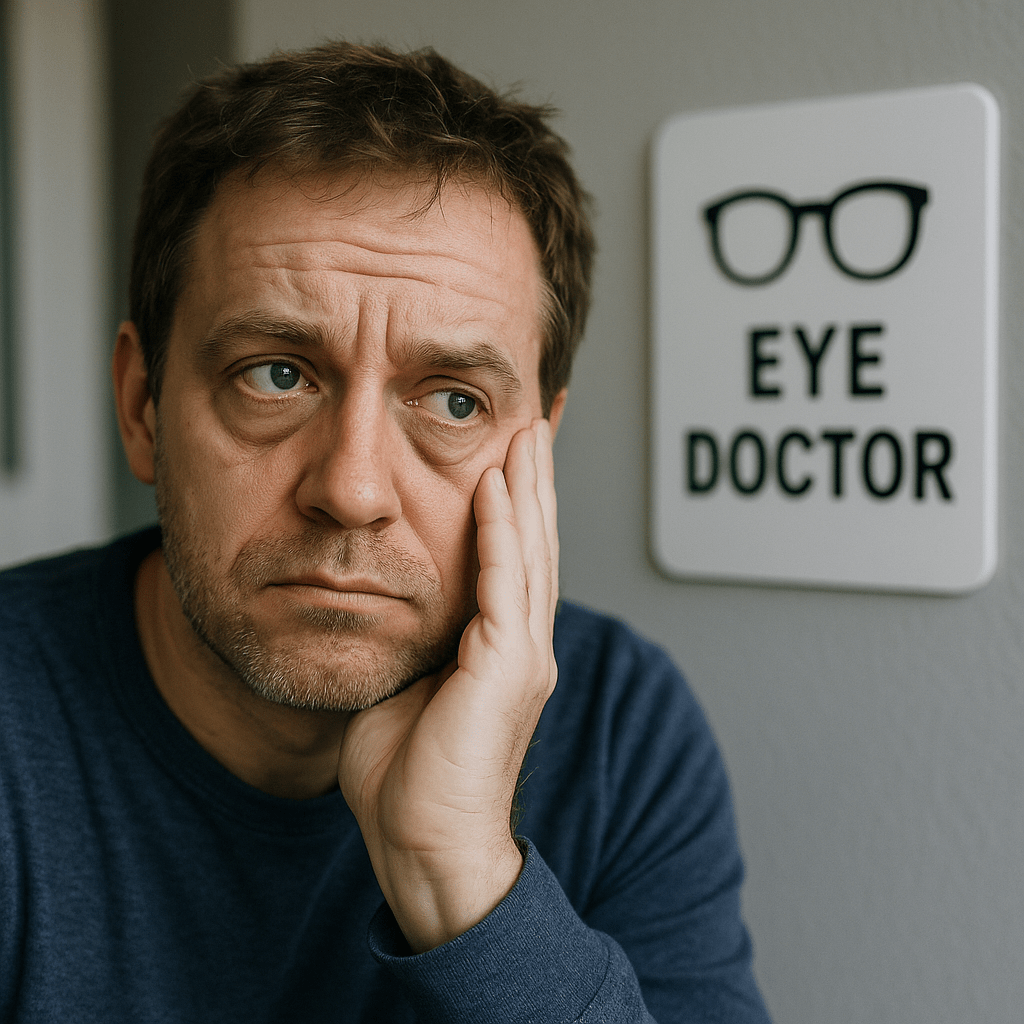
- Laser resurfacing (tightens skin and boosts collagen)
- Fillers (to smooth transitions between under-eye area and cheek)
- Radiofrequency or ultrasound therapies (stimulate collagen)
Surgical Option: Lower Eyelid Blepharoplasty
This is the gold standard for treating under-eye bags caused by fat bulging.
- Removes or repositions fat
- Tightens excess skin
- Usually performed from inside the eyelid — no visible scar
- Outpatient procedure with minimal downtime
Always consult an oculoplastic surgeon or cosmetic ophthalmologist experienced in eyelid surgery.
⚖️ Eye Bags vs. Dark Circles: What’s the Difference?
These terms are often confused, but they’re not the same.
| Under-Eye Bags | Dark Circles |
|---|---|
| Puffiness/swelling | Discoloration (brown, blue, or purple) |
| Caused by fat, fluid | Caused by thinning skin, blood vessels, or pigmentation |
| May require surgery | Can respond to skincare or filler |
✅ Summary: What Actually Works?
If you’re serious about reducing under-eye bags, here’s a step-by-step strategy:
- Change your diet — reduce salt, drink more water
- Use cold compresses daily — especially in the morning
- Address allergies — antihistamines and avoidance
- Protect your skin — sunscreen, hydration, and gentle skincare
- Avoid harsh creams — use only eye-safe products
- Get enough sleep — and manage stress
- Seek medical help — if fat displacement or aging is severe
💬
Under-eye bags are a natural part of aging for many people — but they don’t have to be permanent. Whether your puffiness is from fluid retention, lack of sleep, allergies, or genetics, there are steps you can take to improve your appearance and feel more confident.
✨ No one remedy works for everyone. But with the right approach — and realistic expectations — you can reduce puffiness and take better care of the delicate skin around your eyes.
Got a question?
Drop it in the comments below — or share your favorite under-eye tip with our community!

